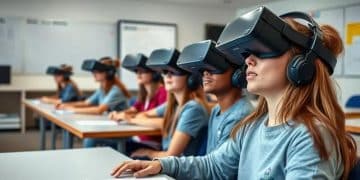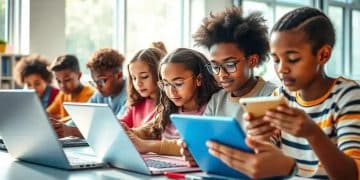Insights on gamified learning platforms for better engagement
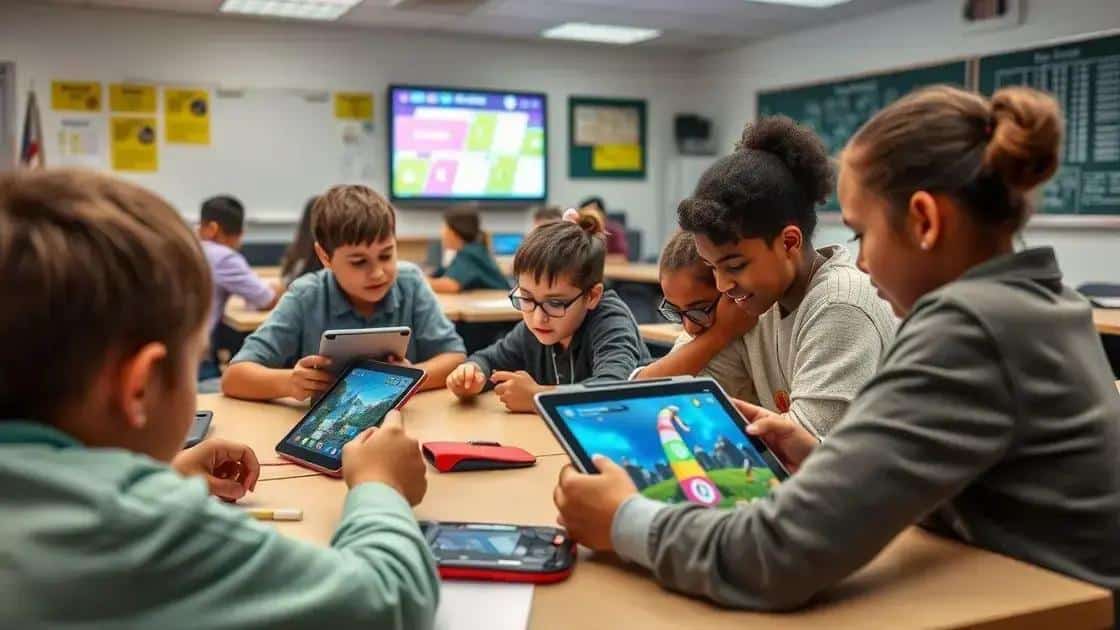
Gamified learning platforms enhance education by integrating game mechanics, which increases student engagement, improves knowledge retention, and allows for personalized learning experiences through advanced data analytics and technology like virtual reality.
Insights on gamified learning platforms highlight an exciting shift in educational methodologies. Have you ever wondered how games can make learning more engaging? This article delves into how these platforms are reshaping the learning experience.
What are gamified learning platforms?
Gamified learning platforms are innovative tools that blend game-like elements with educational content. By using points, badges, and challenges, these platforms engage learners in a fun way. This approach turns traditional learning into an exciting experience, motivating students to participate actively.
Features of Gamified Learning Platforms
There are several key features that define these platforms. They often include:
- Interactive activities: Students learn through games and quizzes.
- Progress tracking: Learners can see their advancement as they earn rewards.
- Immediate feedback: Users receive instant responses to their answers, helping them learn from mistakes.
- Social elements: Platforms often allow collaboration and competition among peers.
These features create an immersive learning environment. For instance, when students earn a badge after completing a module, they feel a sense of accomplishment. This drive to earn more rewards encourages continuous learning and helps retain knowledge.Gamified learning can cater to different learning styles. Visual learners might enjoy video games, while kinesthetic learners can benefit from hands-on challenges.
The Role of Customization
Another significant aspect of gamified learning platforms is customization. Educators can tailor the games to fit their curriculum seamlessly. This personalization makes learning relevant and fun, ensuring that students stay engaged.
As you see, gamified platforms can revolutionize education. They not only make learning enjoyable but also effective, paving the way for modern educational strategies.
Benefits of gamified learning
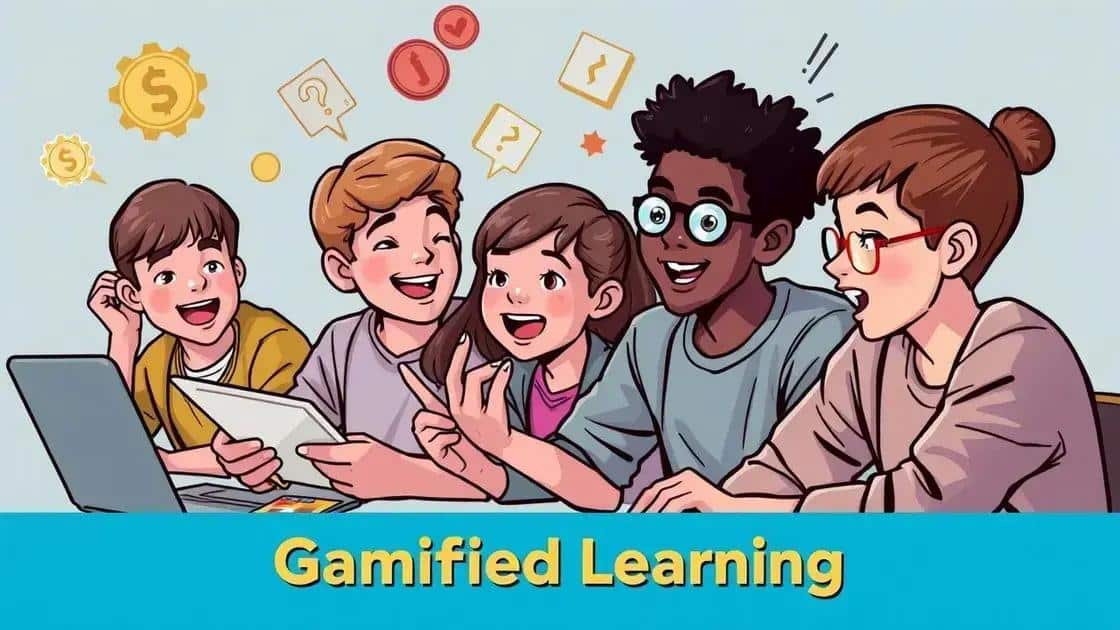
Gamified learning offers numerous benefits that enhance the educational experience. By integrating game elements into educational settings, students become more engaged and motivated. This method not only makes learning fun but also increases retention and understanding of concepts.
Increased Engagement
One of the primary benefits of gamified learning is the increase in student engagement. When learners work through challenges and earn rewards, they feel more connected to the material.
- Interactive learning: Games encourage active participation in the learning process.
- Motivation boosts: Earning points or badges serves as a powerful incentive.
- Social interaction: Gamified platforms often promote teamwork and friendly competition.
These factors lead to a more vibrant classroom atmosphere. Students who are actively engaged tend to perform better academically. They take ownership of their learning journey, which can foster a deeper understanding of the subject matter.
Improved Knowledge Retention
Another significant advantage is the enhanced knowledge retention. Through repeated practice and instant feedback, students can solidify their understanding of concepts. Gamified learning platforms often incorporate spaced repetition techniques, which are particularly effective in helping learners remember information over time.
This method allows students to revisit material in a playful format, reinforcing their learning without it feeling tedious. For instance, completing levels or challenges exudes a sense of accomplishment, making the learning experience more memorable.
Besides, gamified learning accommodates various learning styles. Visual, auditory, and kinesthetic learners all find suitable avenues to thrive. The combination of competition and cooperation nurtures an inclusive environment where every student can excel, making gamified learning a holistic approach to education.
How to effectively integrate gamified learning
Integrating gamified learning into education can greatly enhance student engagement and motivation. To do this effectively, educators should follow a few key strategies. Understanding how to embed game mechanics into educational settings is essential for success.
Identify Learning Goals
Before implementing gamification, it is crucial to identify the specific learning goals of your curriculum. These goals will guide the design of the gamified experience. They ensure that games align with educational outcomes, keeping students focused on their objectives.
- Set clear objectives: Define what you want students to learn.
- Align activities with standards: Use educational standards as a framework.
- Encourage collaboration: Include team-based challenges that require students to work together.
By establishing clear goals, you create a roadmap for both learners and educators. This clarity helps everyone understand the purpose of gamified elements, increasing motivation.
Choose Appropriate Tools
Selecting the right tools and platforms is vital for successful integration. There are various gamified learning platforms available that provide engaging experiences. Each platform has unique features that can suit different classroom needs.
Consider factors such as:
- User-friendliness: The tool should be easy for both teachers and students to use.
- Flexibility: Choose tools that allow for customization based on the curriculum.
- Analytics: Opt for platforms that provide insights into student performance and engagement.
These features will support educators in tracking progress and fostering a productive learning environment.
Implementing gamified learning requires ongoing feedback and iteration. Gathering feedback from students helps to refine the experience. Adjustments based on their input ensure that the gamified elements remain relevant and effective.
Future trends in gamified education
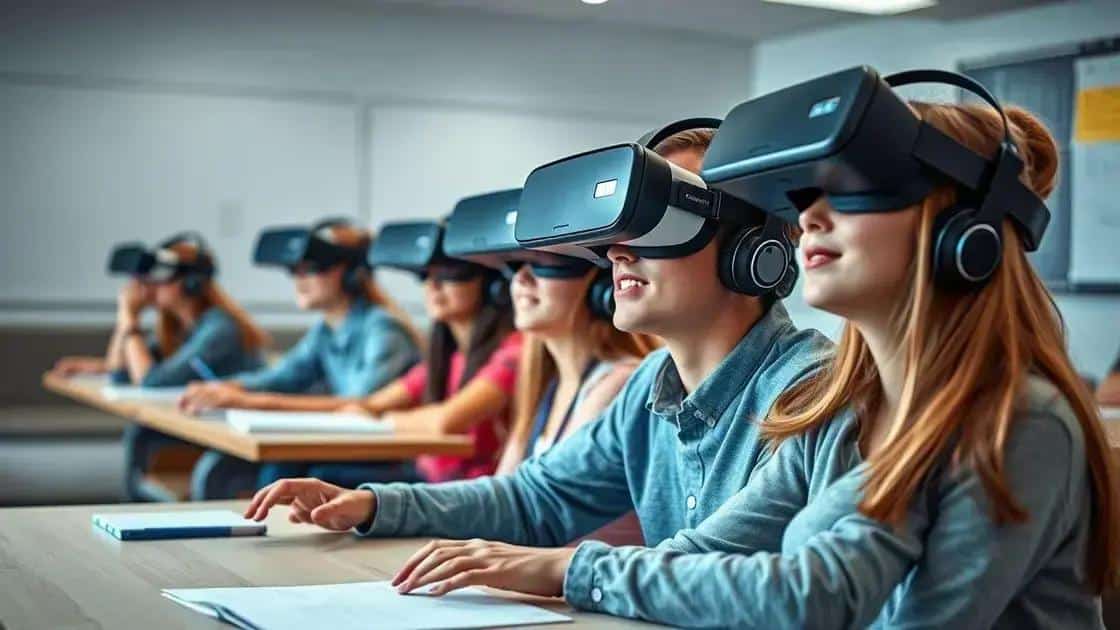
The future of gamified education is bright, with several emerging trends set to transform how learners engage with educational content. As technology continues to evolve, gamification will play an even greater role in the classroom, making learning more interactive and enjoyable.
Integration of Virtual Reality
One exciting trend is the integration of virtual reality (VR) into gamified learning. VR can transport students into immersive environments where they can explore concepts in a hands-on way. This aspect greatly enhances the learning experience, allowing students to engage with subject matter like never before.
- Experiential learning: Students can learn by doing, increasing retention.
- Enhanced engagement: Immersive environments keep students interested and motivated.
- Real-world applications: Students can practice skills in realistic scenarios.
The use of VR is expected to grow, providing educators with new tools to create memorable lessons that stick.
Personalized Learning Experiences
Another significant trend is the shift towards personalized learning through gamification. Advanced data analytics and learning management systems will allow educators to tailor content to meet each student’s unique needs. Using game mechanics, educators can track progress and adapt learning paths accordingly.
This approach fosters a more inclusive learning environment. Students can work at their own pace, mastering skills before moving on to more complex tasks. Gamification not only accommodates different learning styles but also recognizes individual strengths and weaknesses.
AI-driven tools will also enable the creation of custom challenges or quests based on student performance, further enhancing their engagement and learning outcomes. As these trends continue to gain traction, the future of gamified education looks promising.
In summary, gamified learning platforms have the potential to transform education in exciting ways. They engage students by using game elements to make learning fun and interactive. As technology advances, future trends like virtual reality and personalized learning will further enhance these platforms. By embracing gamification, educators can create dynamic learning environments that not only motivate students but also improve knowledge retention. The continuous evolution of gamified education promises a brighter future for both learners and teachers alike.
FAQ – Frequently Asked Questions about Gamified Learning Platforms
What are gamified learning platforms?
Gamified learning platforms use game mechanics to enhance education, making learning interactive and fun for students.
How can gamification increase student engagement?
Gamification increases engagement by providing rewards, challenges, and a competitive atmosphere that motivates students to participate actively.
What role does data analytics play in gamified education?
Data analytics helps educators track student progress and personalize learning experiences, ensuring that content meets individual needs.
What are some future trends in gamified education?
Future trends include greater use of virtual reality for immersive experiences and more advanced personalization through AI and analytics.

